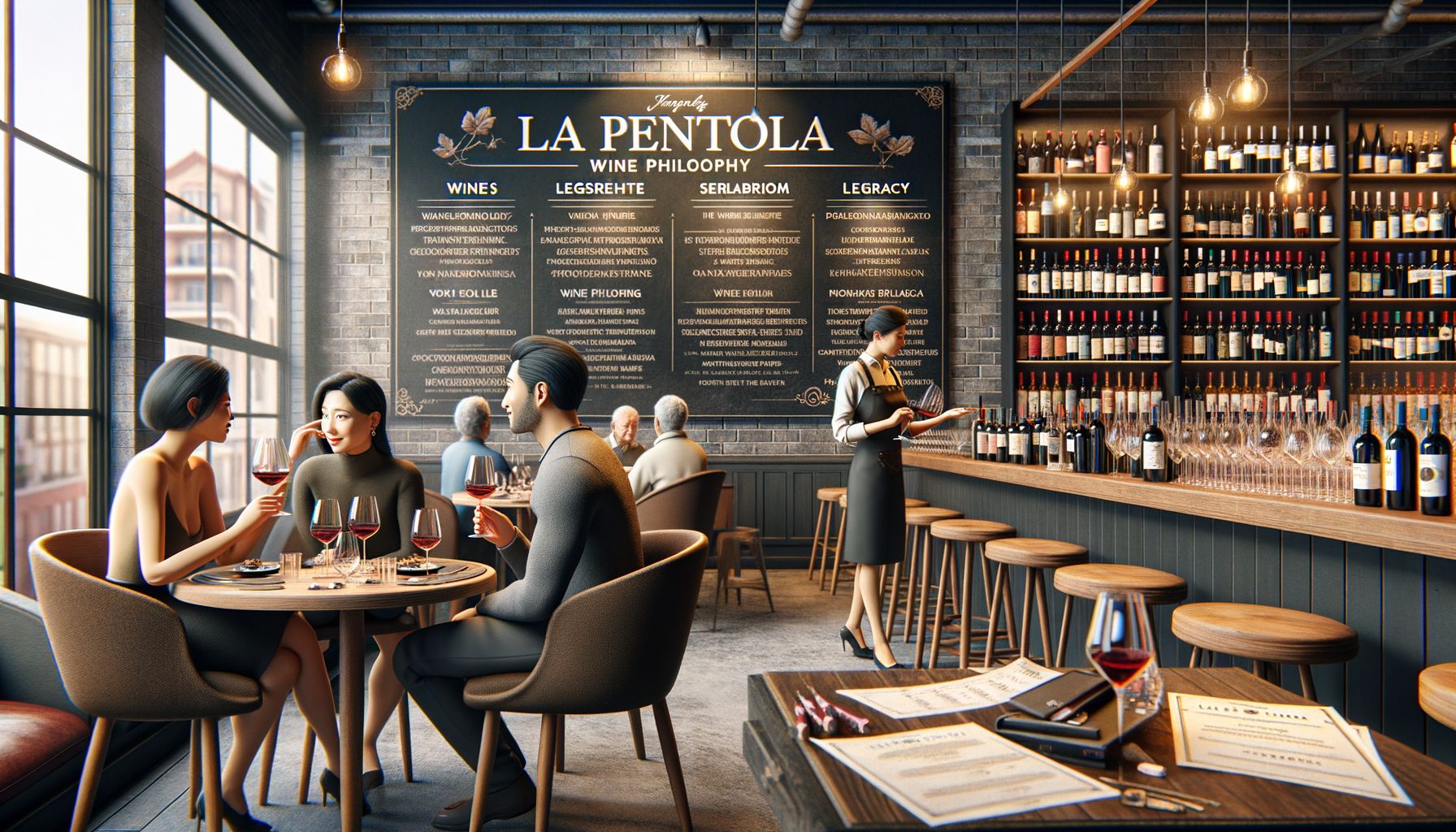La Pentola Wine Philosophy Yaletown
La Pentola centers on wines that advance flavour at the table, prioritizing Italian terroir and varietals that complement the menu inside OPUS Hotel. The restaurant continues the culinary ethos of award-winning La Quercia by pairing rigorous ingredient sourcing with a wine program built for sharing, seasonal change and Yaletown service standards.
Program, Legacy and Service Practices

La Quercia’s reputation informs La Pentola’s cellar choices: wines selected for provenance, producer story, and food harmony. The sommelier team curates bottles from well-known appellations and from small family producers, balancing labels that attract collectors with approachable options by the glass. Service emphasizes clear recommendations at the table, with tasting pours and decanting when structure benefits aromatics. Typical front-of-house practice at OPUS Hotel includes announcing vintage, origin and primary grape when presenting a bottle, showing the label, and offering a small taste of the wine before pouring for the table. Wine-by-the-glass rotates frequently; menu design highlights pairing cues for antipasti, pasta, seafood and mains. For private dining and special events, multi-course paired menus are created in collaboration with the kitchen, often featuring verticals from featured producers and focused tasting flights to reveal stylistic differences among vintages and terroirs.
Sourcing relationships are critical. The cellar profiles boutique and family wineries from regions such as Piedmont, Tuscany, Veneto and Sicily, with several direct-import partnerships that ensure allocation of limited-production wines. Sustainability and organic options are intentionally represented: labels certified organic, biodynamic and low-intervention appear alongside conventional producers. For guests who prefer natural wine, selections rotate and staff are trained to describe production methods and expected palate profiles without jargon.
Before service, the sommelier calibrates serving temperatures and decanting needs to restaurant conditions. Decanting is common for ageworthy Barolo and Brunello, and for robust Tuscan reds. Glassware is selected to enhance aromatics: larger Bordeaux-style stems for Nebbiolo and Brunello, narrower white wine stems for aromatic Vermentino and Verdicchio. Staff guidance on glasses, decanting and pour sizes supports both new and seasoned wine drinkers.
Regions, Selections and Representative Bottles

La Pentola’s list highlights regions whose wines naturally suit the menu’s rustic yet refined approach. Selections favor expressive grapes: Nebbiolo and Barbera from Piedmont, Sangiovese and Brunello from Tuscany, Pinot Grigio and Prosecco from Veneto, Vermentino from Sardinia and Liguria, Fiano and Greco from Campania, Nero d’Avola from Sicily. Representative selections by style, origin, grape and pairing intent follow:
| Style | Region | Typical grape(s) | Food pairing examples | Serving temp (°C) |
|---|---|---|---|---|
| Sparkling/apertivo | Veneto (Prosecco), Lombardy (Franciacorta) | Glera, Chardonnay/Pinot | Light antipasti, cured seafood, fritti | 6–8 |
| Crisp whites | Friuli, Veneto, Sardinia | Pinot Grigio, Vermentino | Shellfish crudo, salads, citrus-forward sauces | 8–10 |
| Aromatic whites | Campania, Marche | Fiano, Verdicchio | Scallops, herb-forward risotto, grilled vegetables | 10–12 |
| Light reds/rosé | Veneto, Tuscany, Puglia | Dolcetto, Sangiovese, local blends | Prosciutto, tomato salads, light pasta | 12–14 |
| Medium/full reds | Piedmont, Tuscany | Nebbiolo, Sangiovese, Brunello | Braised beef, rich pasta, roast pork | 16–18 |
| Powerful reds | Sicily, Calabria | Nero d’Avola, local blends | Grilled meats, game, aged cheeses | 18–20 |
| Fortified/dessert | Sicily (Marsala), Tuscany (Vin Santo) | Marsala, Trebbiano, Malvasia | Tiramisu, almond desserts, mature cheeses | 12–14 (served small) |
Following the table, the list continues to rotate seasonally; special allocations and tasting bottlings are highlighted on a separate reserve insert. Bottles chosen for flights often reflect a single region or grape to illustrate stylistic range.
Pairing Philosophy with Dishes
Pairing at La Pentola emphasizes texture and acidity first, then tannin and body. Antipasti that include citrus, pickled vegetables or shellfish typically pair best with crisp whites or lighter sparkling. Tomato-based small plates prefer brighter reds such as Sangiovese or Sangiovese blends, where acidity cuts through sauce. Classic pastas and risottos receive careful matching: cream-based risotto with aged Verdicchio or a richer Fiano, ragù-tomato pastas with Chianti Classico or Barbera. Seafood mains are often matched to Vermentino, Friulian whites or a clean Pinot Grigio; when fish is grilled with a char, a lighter red such as Dolcetto may be suggested.
Hearty mains and game benefit from structured Tuscan or Piedmontese wines. Barolo or Brunello support dishes with marrow, truffle or slow-roasted meats and are decanted to release aromatics. Vegetarian and plant-forward offerings are treated with the same rigor: grilled eggplant with pesto invites an aromatic white, while mushroom tagliatelle pairs well with medium-bodied Nebbiolo or aged Barbera. Fortified wines and passito are reserved for dessert pairing, aligning with the intensity of sweet endings like cannoli or almond biscotti.
Signature dish pairings are developed collaboratively between chef and sommelier, with periodic wine dinners that present matched courses alongside producer stories. Tasting menus offer three- to seven-course options with selective pairing, and flights allow comparison by region, grape or vintage.
Practical Home Pairing Tips Inspired by La Pentola
Adopt a few reliable rules when pairing at home: match weight of dish to wine, use acidity to refresh the palate, and consider preparation methods more than single ingredients. Chill whites and sparkling appropriately and allow bold reds to breathe if young. For home tastings, purchase small-format bottles or split bottles where available. For special dinners, select one regional focus and build courses around a single grape to illustrate contrasts. Proper glassware, modest decanting and presenting the bottle at the table elevate the experience and reflect the service standards practiced at OPUS Hotel.
